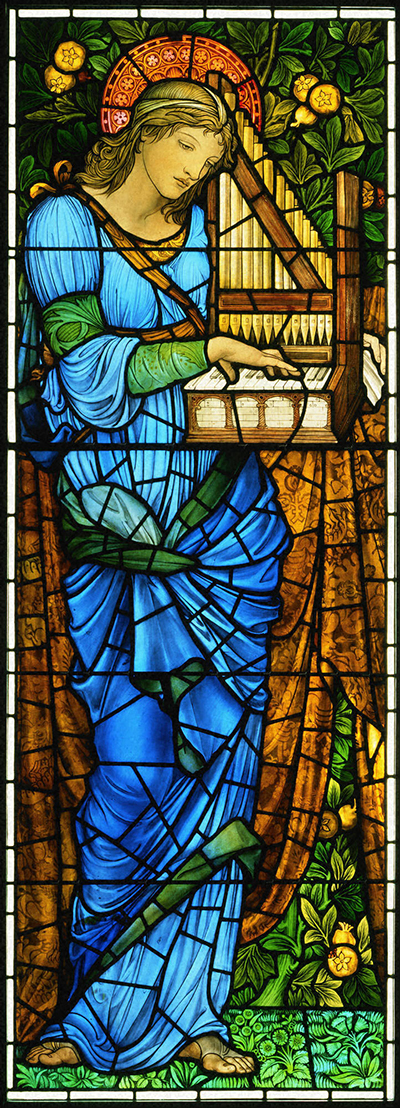Edward Burne-Jones played a leading role within Morris & Co. for designing stained glass windows, with many of these stunning creations still in existence.
Morris & Co. would play a huge part in Burne-Jones' development and also motivation to perfect his skills as both a craftsman and artist. The collective strength of this collection of highly skilled creatives enabled them to pool together some highly impressive commissions over a number of years. Their attention to detail and reliance on traditional techniques helped them to build up a reputation for quality and integrity. Whilst holding diverse skills which enabled them to produce carvings, metal-work, paper-hangings, printed fabrics and carpets, their work with stained-glass windows to decorate churches formed a significant part of the business from an early stage.
The artistic qualities of Edward Burne-Jones would spread into multiple disciplines, with each one helping each other. His impressive skills as a draughtsmen, for example, would directly impact his design work for the windows found here. It would be the responsibility of others in the company to implement his designs into the many churches for whom they worked, he just concentrated on designing how they would look. When considering the donors, it is hardly surprising that most of his work in this medium was themed along religious lines, where as he had more freedom on content in other mediums in which he worked, such as painting and embroidered tapestries.
This art form is very much unsuited to public display outside of its original intended location. There are not many public galleries that can present this art form and most also must remain in their installed places. Only the largest exhibition halls can handle these large and delicate creations, whilst also controlling light well enough that one can enjoy the original designs. Perhaps this has held back this art form from becoming a larger part of mainstream art. Additionally, as society has changed over recent centuries, architectural styles have also moved in new directions.
Edward Burne-Jones appeared to have a desire to produce public art on a truly grand scale, which could not be delivered through oil painting. Perhaps his work in that medium was intended to develop his skills for areas such as this, where larger artworks became possible. He was known to dislike standard exhibitions, as outlined in his wife's memoirs. He would surely have gained far more satisfaction to see his designs displayed in churches across the UK, as they still are today.




